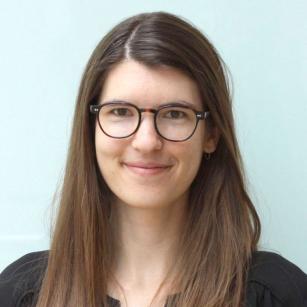
77 Massachusetts Ave.
Cambridge, MA 02139
Degrees
- PhD, Neuroscience, MIT
- BS, Cognitive Science, McGill University
Bio
Laura Lewis is the Athinoula A. Martinos Associate Professor in IMES and EECS at MIT, and an Associate Faculty Member at the Martinos Center for Biomedical Imaging at MGH. She completed her Ph.D. in Neuroscience, and conducted postdoctoral work in neuroimaging, in the Society of Fellows at Harvard University. Her research develops multimodal approaches for imaging the human brain, and applies them to study the neural circuitry that controls sleep, and the consequences of sleep for brain function. Her work has shown that fast fMRI can measure subsecond neural dynamics, and discovered waves of cerebrospinal fluid flow that appear in the sleeping human brain. Her research has been recognized by awards such as the Peter and Patricia Gruber International Research Award, the Sloan Fellowship, the McKnight Scholar Award, and the Pew Scholar Award.
Research
Sleep is essential for brain function, but sleep states are challenging to study with current brain imaging techniques. Laura's research aims to develop methods to analyze and interpret multimodal neuroimaging data, in order to enable measurement of previously undetectable aspects of brain function. She has a particular interest in fast fMRI, EEG, and PET, and is applying those methods to study sleep. Her lab integrates neuroscience and engineering to develop advanced methods for multimodal imaging, and applies them to understand the neurobiological origins of sleep. Her long-term vision is to make two major contributions: first, to develop analytic and computational methods for multimodal imaging that can be widely adopted by the neuroimaging community, resulting in large-scale impact for cognitive neuroscience as a field. Second, she aims to understand the neural basis of sleep, and the consequences of sleep for brain function in turn. Ultimately, her lab integrates computational methods, imaging technology, and neuroscience to identify new principles for how the brain creates a spectrum of arousal and attentional states, as this state-dependent flexibility is essential to human cognition.
Selected Awards/Societies
- 2021 Sloan Research Fellow
- 2021 McKnight Scholar Award
- 2021 Pew Scholar Award
- 2020 Searle Scholar Award
- 2020 Smith Family Award for Excellence in Biomedical Research
- 2019 One Mind Rising Star Award
- 2017 Peter and Patricia Gruber International Research Award, Society for Neuroscience
Selected Publications
Levitt, J., Yang, Z., Williams, S.D., Lutschg Espinosa, S., Garcia-Casal, A., Lewis, L.D. (2022). EEG-LLAMAS: an open-source, low-latency EEG-fMRI neurofeedback platform. bioRxiv. doi: 10.1101/2022.11.21.515651.
Setzer, B., Fultz, N.E., Gomez, D., Williams, S.D., Bonmassar, G., Polimeni, J.R., Lewis, L.D. (2022). A temporal sequence of thalamic activity unfolds at transitions in behavioral arousal state. Nature Communications, 13:5442. Open-access link.
Lewis, L.D. (2021). The interconnected causes and consequences of sleep in the brain. Science. 374(6567):564-568. (Review article). Open-access link
Agrawal, U., Brown, E.N., Lewis, L.D. (2020). Model-based physiological noise removal for fast fMRI. Neuroimage. Open-access link.
Fultz, N., Bonmassar, G., Setsompop, K., Stickgold, R.A., Rosen, B.R., Polimeni, J.R., Lewis, L.D. (2019). Coupled electrophysiological, hemodynamic, and cerebrospinal fluid oscillations in human sleep. Science. 366:6445, 628-631. Open-access link.
Description
The Lewis lab integrates neuroscience and engineering to develop advanced methods for multimodal imaging, and applies them to understand the neurobiological origins of sleep. To enable measurement of previously undetectable aspects of brain function, Laura Lewis and her lab develop advanced MRI and multimodal approaches to measure neural, vascular, and CSF physiology. The lab applies these tools to identify neural circuits that regulate sleep, and explore neurophysiology in aging, sleep disorders, and hormonal modulation. Projects integrate computational methods, imaging technology, and neuroscience to identify how the brain creates a spectrum of arousal and attentional states, as this state-dependent flexibility is essential to human cognition.
